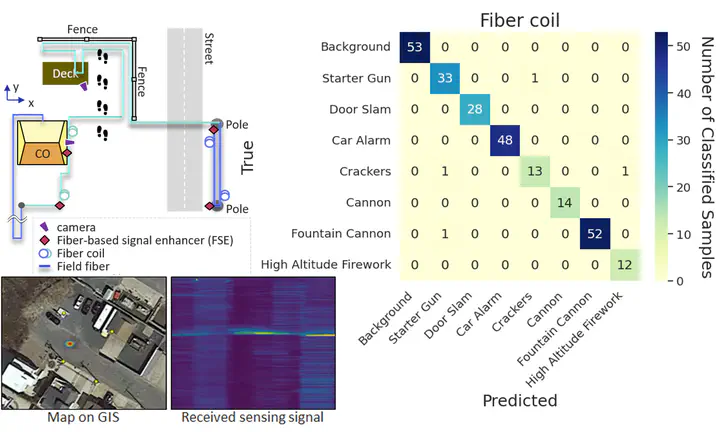
Fiber sensing detects physical parameters such as phase and polarization changes in optical signals. This optical data must be interpreted into human-understandable events and scene information for real-world applications.
We developed applied machine learning and signal processing algorithms that transform low-level sensory inputs into high-level information, providing real-time perception of the physical world.
The solution can be utilized for reconstructing crime scenes and continuously monitoring events such as car alarms triggered by theft, home break-ins, gunshots, and prohibited fireworks, to enhance public safety in smart and secure city applications.
To Know More
- “CLAP-S: Support Set-Based Adaption for Fiber-Optic Acoustic Recognition.” ICASSP, 2025.
- “Deep learning-based intrusion detection and impulsive event classification for distributed acoustic sensing across telecom networks.” Journal of Lightwave Technology, 2024.
- “Field tests of impulsive acoustic event detection, localization, and classification over telecom fiber networks.” OECC Postdeadline Paper, 2022.